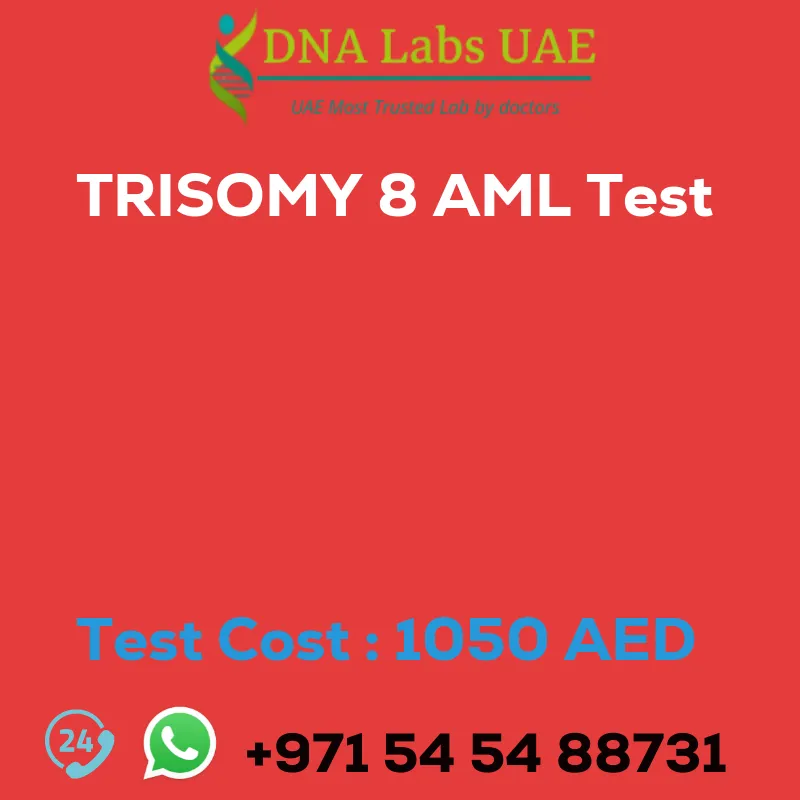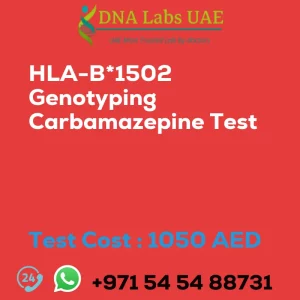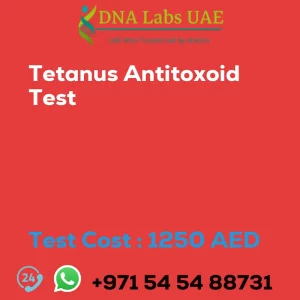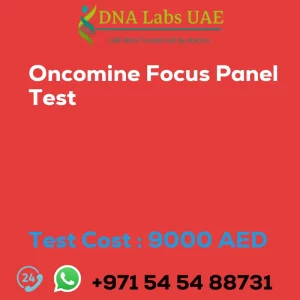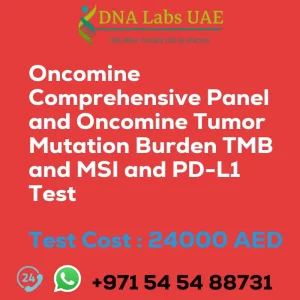TRISOMY 8 AML Test
At DNA Labs UAE, we offer the TRISOMY 8 AML Test, a genetics test that helps diagnose acute myeloid leukemia (AML) with trisomy 8. This test examines the presence of an extra copy of chromosome 8 in the cells of the bone marrow.
Test Details
The TRISOMY 8 AML Test requires a bone marrow or peripheral blood sample. The sample is collected using a Sodium Heparin Vacutainer (2ml). The cost of the test is 1050.0 AED and the report is delivered within 3-4 days. The test is performed using the FISH method, a genetic testing technique. It falls under the genetics department and is usually requested by oncologists.
Symptoms and Diagnosis
Trisomy 8, also known as AML with trisomy 8, is a genetic disorder associated with the development of acute myeloid leukemia. Individuals with trisomy 8 may experience symptoms such as fatigue, easy bruising or bleeding, frequent infections, and shortness of breath. They may also have an enlarged spleen or liver.
Diagnosis of trisomy 8 is usually made through a bone marrow biopsy, which examines the chromosomes of the cells in the bone marrow. This helps identify the presence of an extra copy of chromosome 8.
Treatment and Prognosis
Treatment for AML with trisomy 8 typically involves chemotherapy to destroy the cancer cells in the bone marrow. In some cases, a stem cell transplant may be recommended to replace the diseased bone marrow with healthy stem cells. The prognosis for individuals with trisomy 8 (AML) varies depending on several factors, including age, overall health, and response to treatment.
Pre Test Information
Please note that the TRISOMY 8 AML Test requires a doctor’s prescription. However, prescriptions are not applicable for surgery and pregnancy cases or people planning to travel abroad.
Supportive Care and Genetic Counseling
Individuals with trisomy 8 (AML) may require regular medical follow-up to monitor their condition and manage any potential complications. Supportive care, such as blood transfusions or antibiotics, may be necessary to manage symptoms and prevent infections. Genetic counseling may also be beneficial for individuals and their families to understand the underlying genetic cause and potential risks for future generations.
| Test Name | TRISOMY 8 AML Test |
|---|---|
| Components | Sodium Heparin Vacutainer (2ml) |
| Price | 1050.0 AED |
| Sample Condition | Bone Marrow \/ Peripheral blood |
| Report Delivery | 3-4 days |
| Method | FISH |
| Test type | Genetics |
| Doctor | Oncology |
| Test Department: | |
| Pre Test Information | TRISOMY 8 (AML) can be done with a Doctors prescription. Prescription is not applicable for surgery and pregnancy cases or people planing to travel abroad. |
| Test Details |
Trisomy 8, also known as AML (acute myeloid leukemia) with trisomy 8, is a genetic disorder characterized by the presence of an extra copy of chromosome 8 in the cells of the bone marrow. This condition is often associated with the development of AML, a type of cancer that affects the bone marrow and blood. Individuals with trisomy 8 may experience symptoms such as fatigue, easy bruising or bleeding, frequent infections, and shortness of breath. They may also have an enlarged spleen or liver. Diagnosis of trisomy 8 is usually made through a bone marrow biopsy, which examines the chromosomes of the cells in the bone marrow. Treatment for AML with trisomy 8 typically involves chemotherapy to destroy the cancer cells in the bone marrow. In some cases, a stem cell transplant may be recommended to replace the diseased bone marrow with healthy stem cells. Prognosis varies depending on several factors, including the age of the individual, overall health, and response to treatment. It is important for individuals with trisomy 8 (AML) to receive regular medical follow-up to monitor their condition and manage any potential complications. Supportive care, such as blood transfusions or antibiotics, may be necessary to manage symptoms and prevent infections. Genetic counseling may also be beneficial for individuals and their families to understand the underlying genetic cause and potential risks for future generations. |

